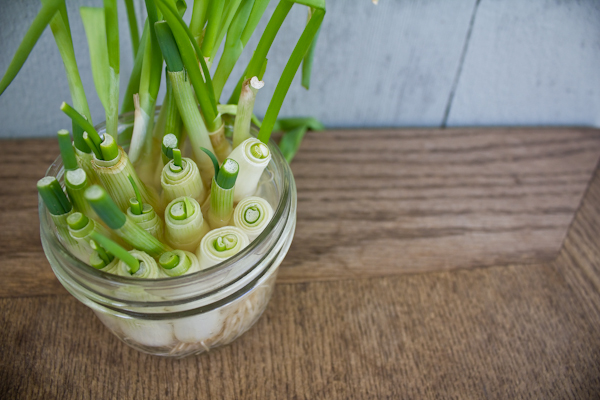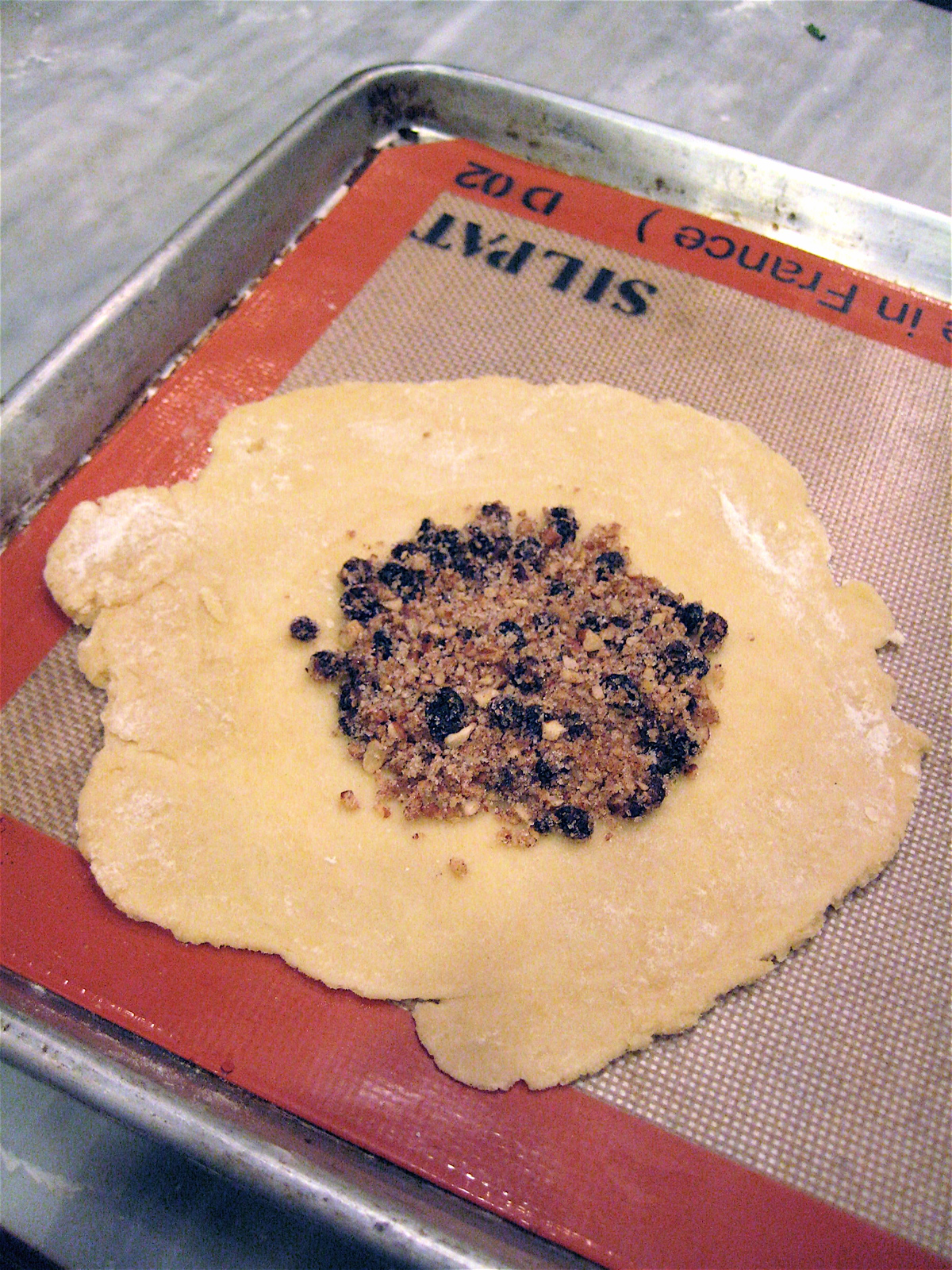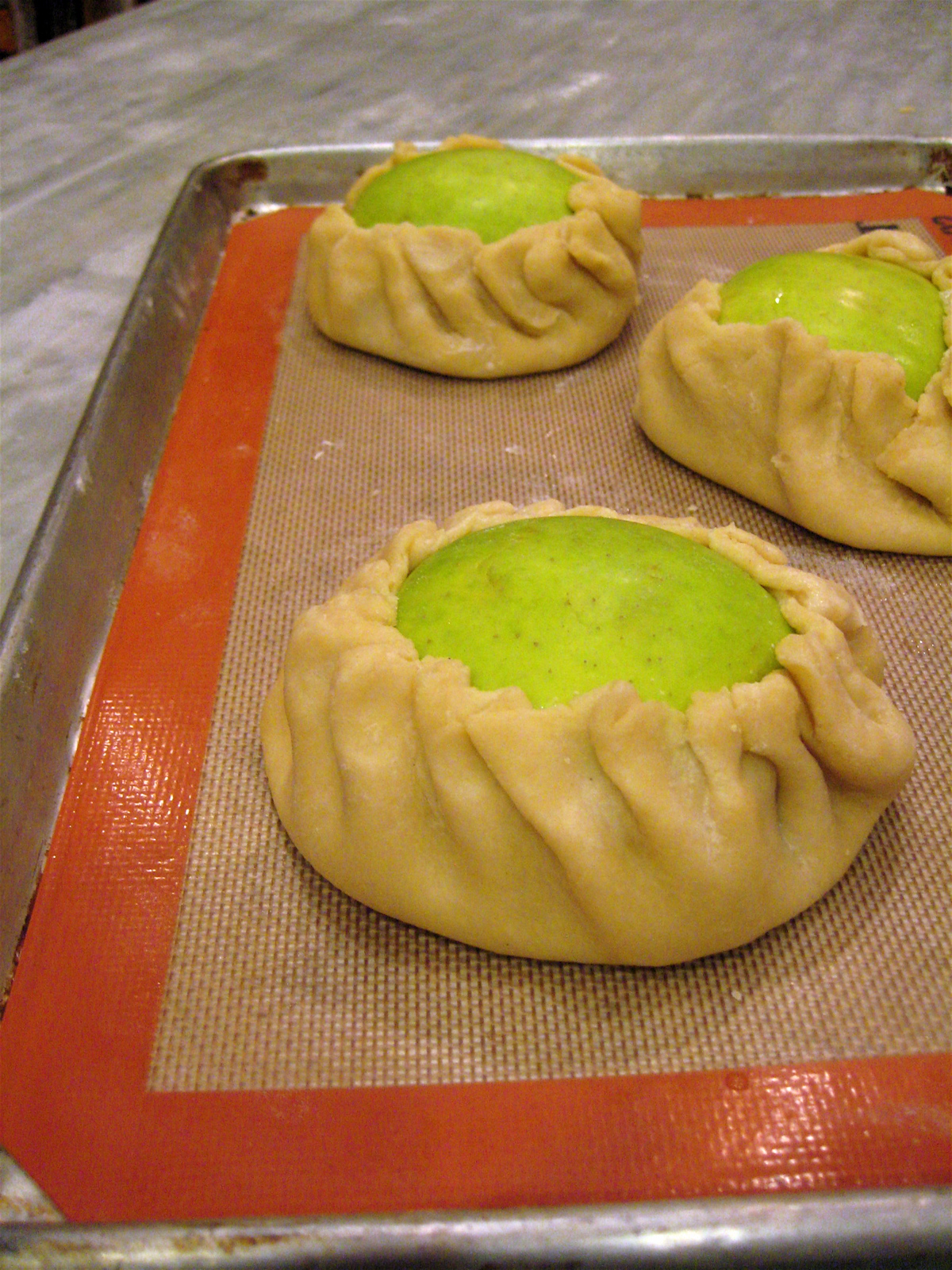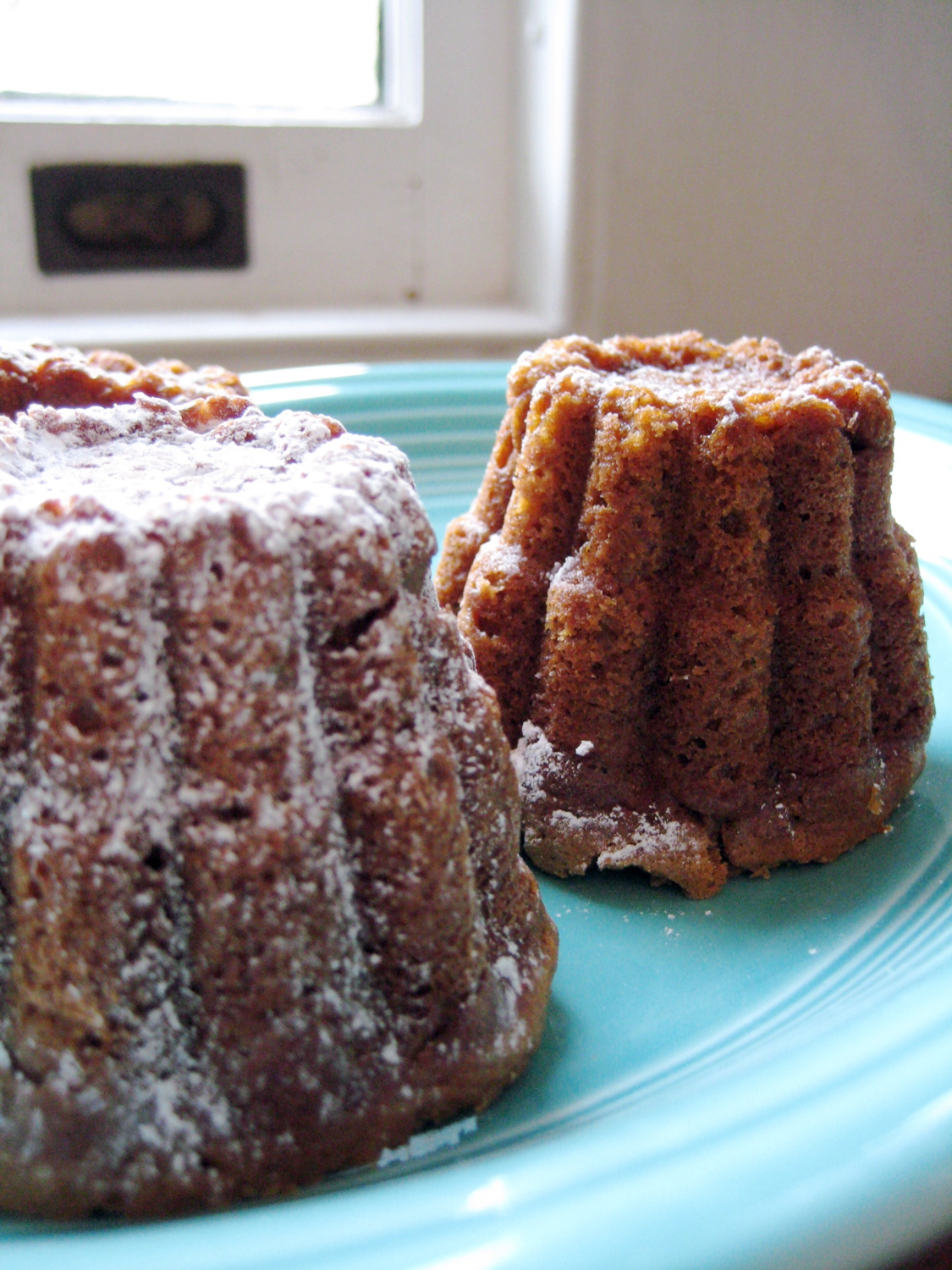Full disclosure: in season or not, I use a lot of scallions. I love their subtle oniony vibe, pop of color, and exotic feel. I love their tubey shape and making thin cuts on an extreme angle for geometric garnishes. I love that they are equally useable raw or cooked. I LOVE them in my Homemade Scallion Pancakes and David Chang's Scallion Ginger Sauce from his Momofuku cookbook. So, each summer I faithfully devote an entire garden bed to growing my own scallions. And each year it is wildly unsuccessful. The seeds are microscopic, making it insanely difficult to evenly distribute them in the ground. When they do start to sprout up, in awkward clusters, they are the tiniest green threads, impossible to see and differentiate from the weeks that are intent on choking them out. But every year, I try, try again. So, cut to me on the subway a couple of weeks ago, overhearing a conversation between two adorable twenty-something hipsters, waxing poetic about the treasures on pinterest. Now I have not really explored pinterest, other than to see some referring pages that have come into my blog. And I have some mixed feelings about it from first glance. However, what I heard the DIYers going on and on about was the "growing scallions thing" on pinterest. Ok, I was curious and googled as soon as I got above ground. Apparently the scallion thing that has swept across the pinterestsphere, is the lesson that you can regenerate whole, perfectly edible scallions from the bottom tips that are usually cut off and tossed away. Yep. And I tried it. And yep. It works! Just place the root ends of scallions upright in about an inch of water and put in a sunny spot. In twenty four hours you will see some growth, and in just under a week they'll be full grown again. The only upkeep is to change the water every other day or so, which also helps cut down on any oniony smell. You can repeat the process three or four times with the same scallion tip. So excited to have a much more successful way of growing my own. And thrilled to add another vegetable to my eating local list--all year round. My apologies to the national scallion growers council.  | ||||||||||||||||
 Soon after I finished culinary school a wise and wonderful chef and cookbook author asked me, as I was first meeting her, what kind of food do you cook? I was a little stumped. I was just out of a year of cooking little other than classical french cuisine. And a year of cooking predetermined recipes that I had to master, in order to learn said classical french cuisine. Eating locally, and seasonally, and knowing where my ingredients come from are always paramount when I cook, but beyond "farm to table", I didn't really have a ready response as far as my personal style with food. But after some introspection, I think at least one of my approaches to cooking, though perhaps somewhat obvious, is to get the finest possible ingredients, at the height of their season or freshness, from the best possible sources, and then: get out of their way. Or compliment their strengths that are already therein, rather than transforming or imposing. At least that's the goal. How can I possibly improve upon a homegrown, just-picked Jaune Flamme heirloom tomato, drizzled with exceptional olive oil This recipe does just that. Blood oranges are in season right now, and at the height of their glorious flavor. They are a stunning deep garnet color, with a taste that ranges from orange to raspberry to grape. A phenomenal homemade pastry crust, along with the roasted fruit, this galette reminds me a lot of my great grandmother's jam-filled thumbprint cookies, or a very sophisticated Pop-Tart. And brings some necessary brightness to a dull week of winter. (more…) | ||||||||||||||||
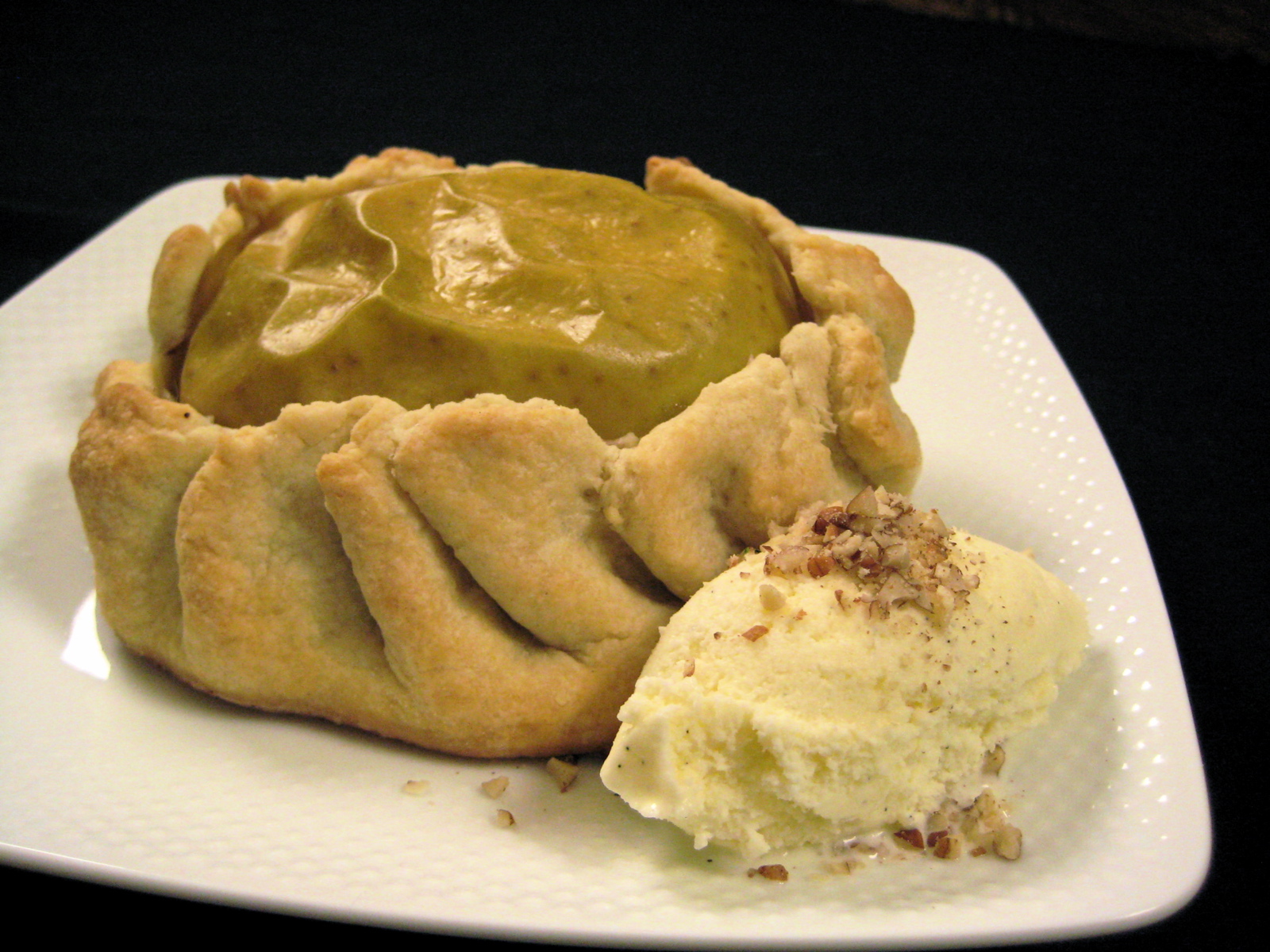 I have some Mutzu apples from a recent trip to the farmers’ market. These apples are softball-huge and bright lime green, and immediately caught my attention as I was perusing the Migliorelli Farm stand. They are such gorgeous specimens it seemed blasphemous to peel them and cut them up into chunks—or toss them with a lot of sugar and seasoning. This recipe is sort of a cross between an apple dumpling, rugelach, galette, with probably a little hamentashen thrown in there too. I love that it really just puts this outstanding apple on a pedestal (or buttery crust), to enjoy almost bare naked. It is simple and rustic, and great by itself—but even better with a scoop of my husband’s homemade vanilla ice cream. 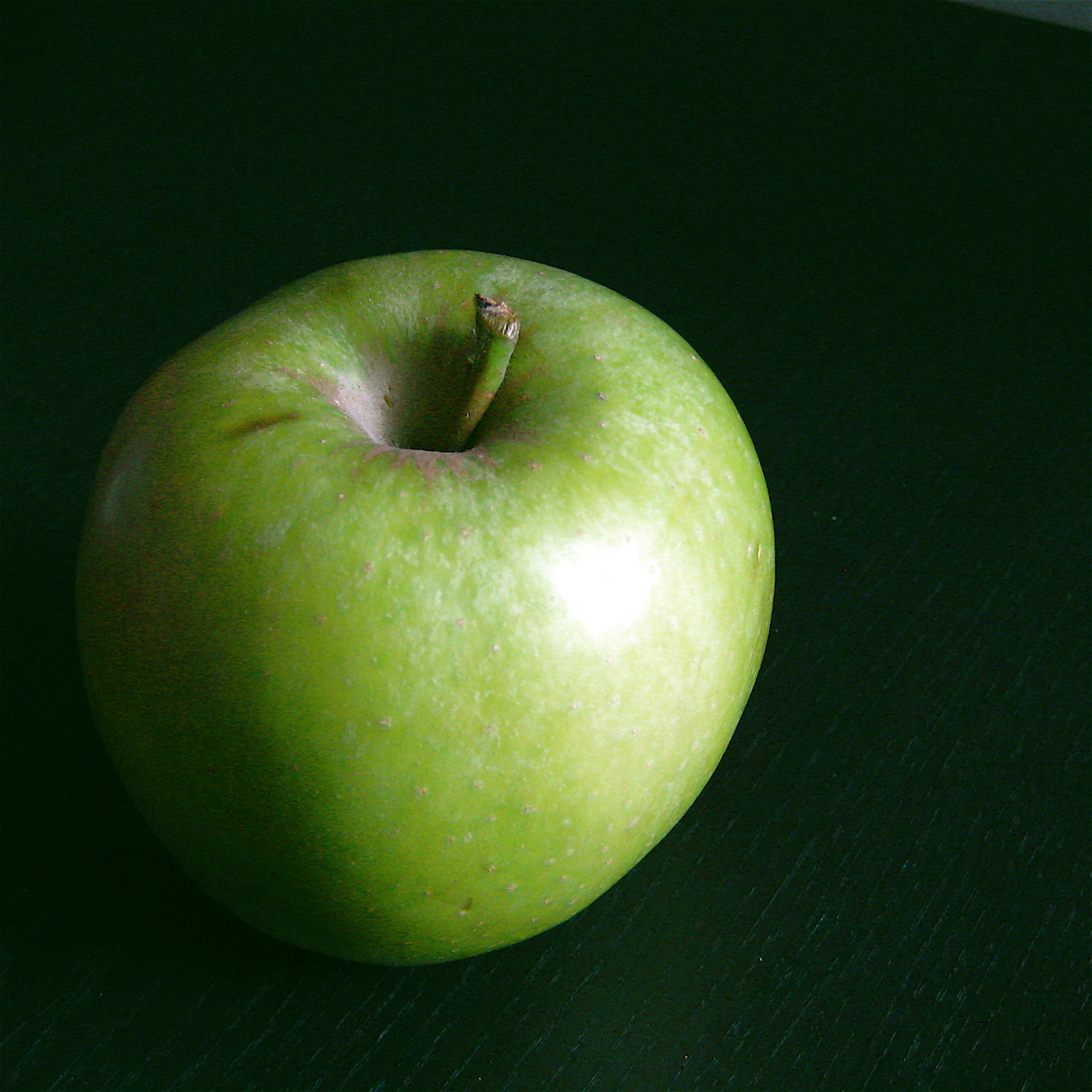 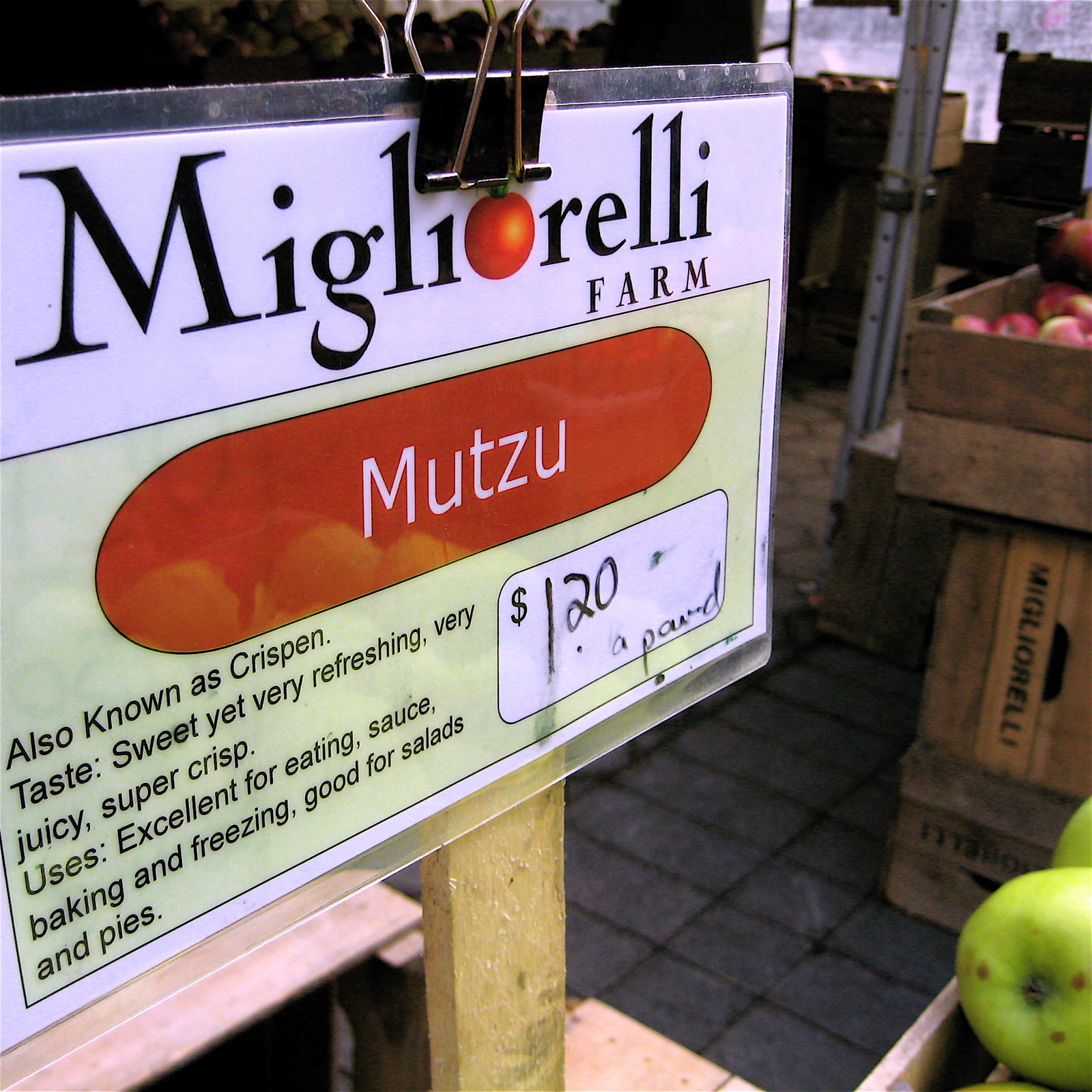 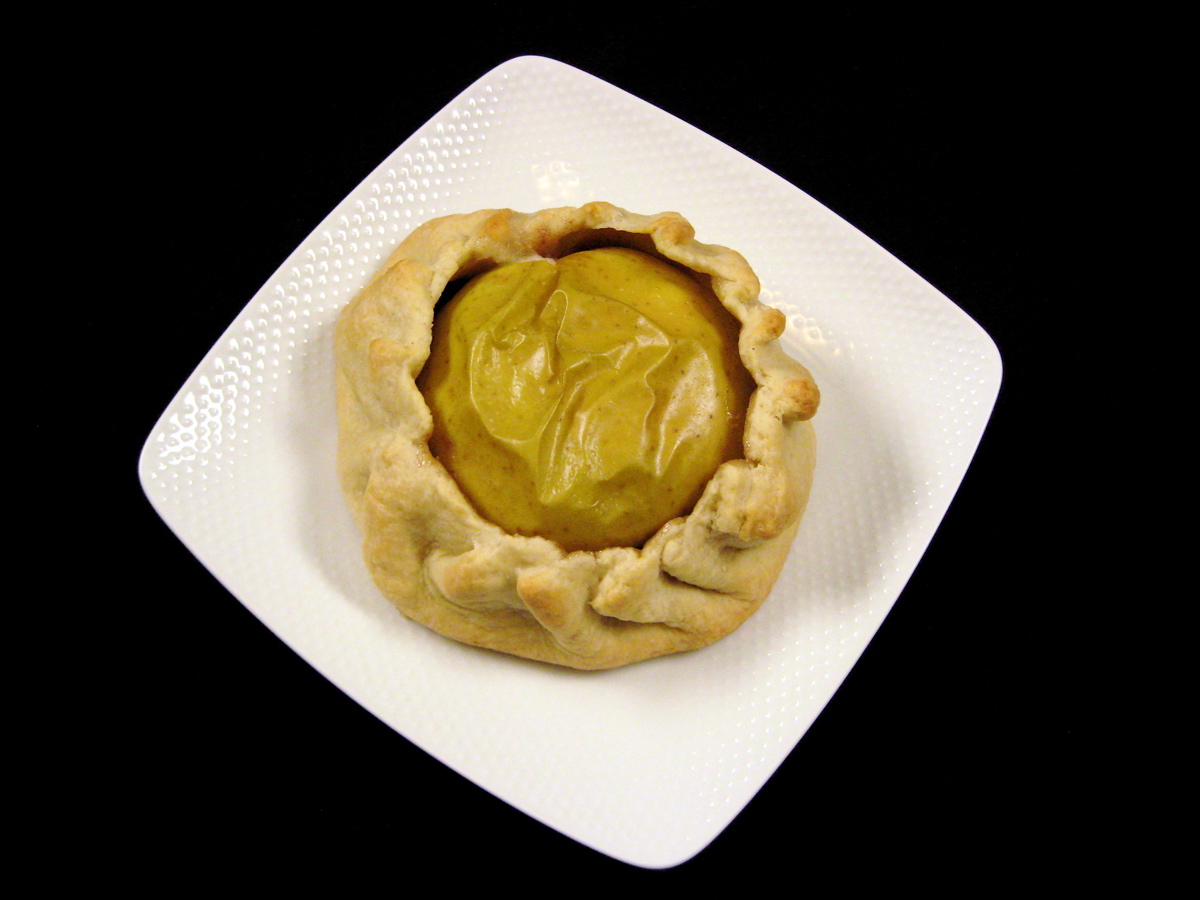 | ||||||||||||||||
Yesterday I received in the mail some adorable vintage aluminum baking molds that I purchased a little while back from the great upcycle shop AntiNu on Etsy.com. I had sweet potatoes from the market, and got to work. 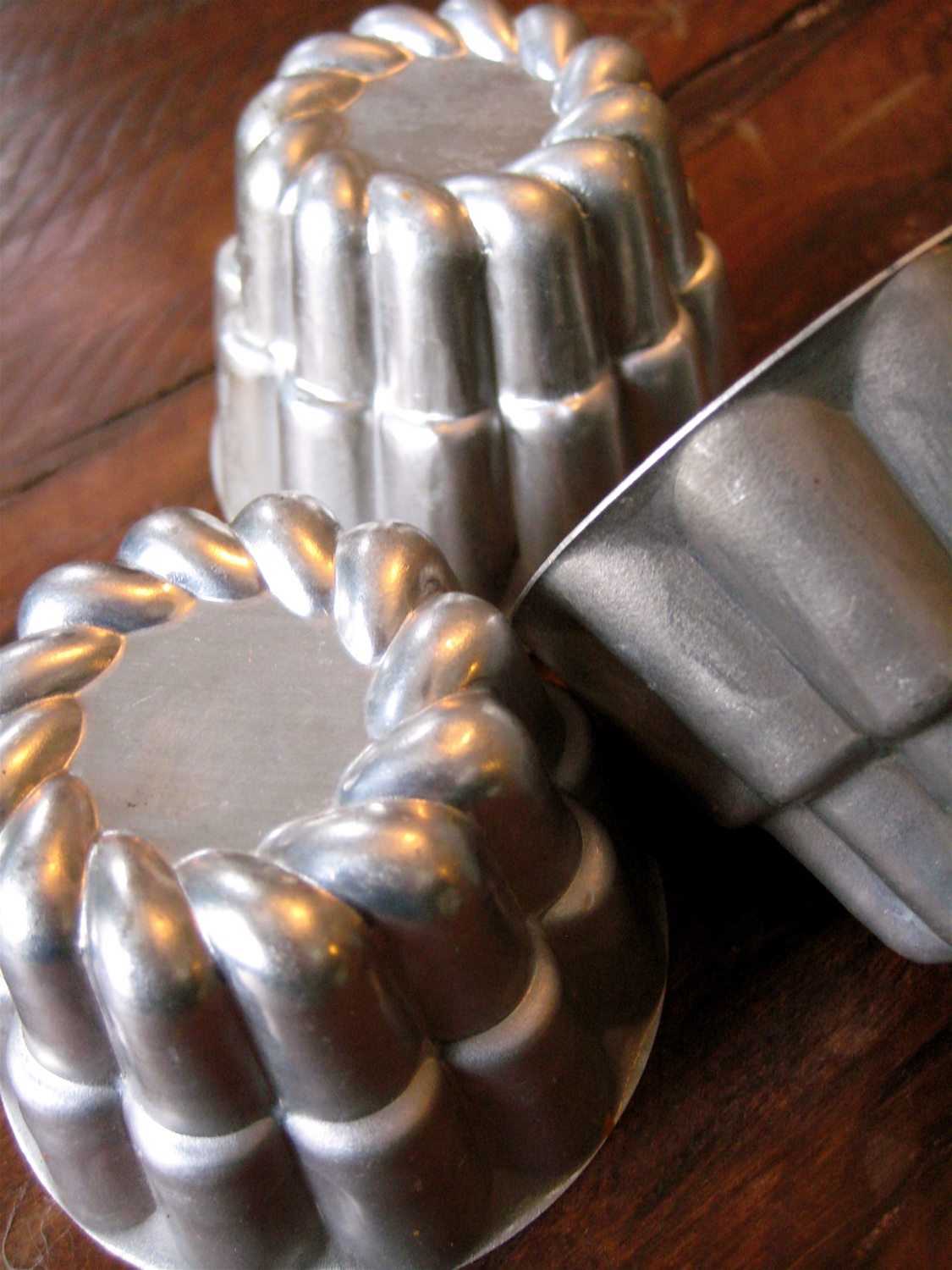 A handful of years ago the Center for Science in the Public Interest did a study comparing the nutrients of vegetables. Sweet potatoes were ranked the most beneficial of all. They are super high in fiber, beta carotene, vitamin C, and, unlike their regular white potato cousins, are a complex carbohydrate, so won't send your glucose soaring (as much). The cakes came out beautifully. Not terribly sweet, they were moist yet airy, and filled the kitchen with warmth and an earthy spice. They would also be great with brunch, or as a dessert with cream cheese frosting.
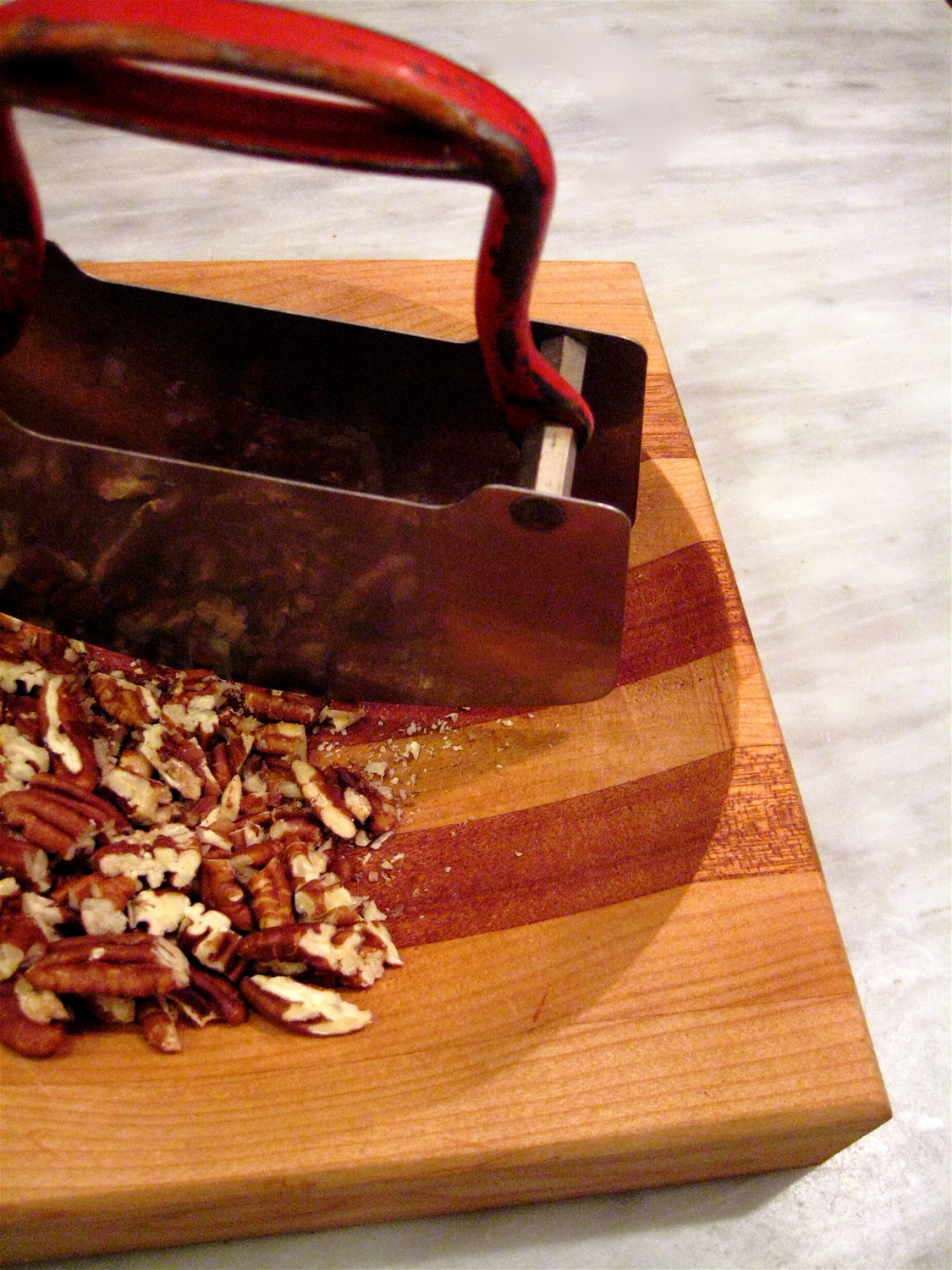 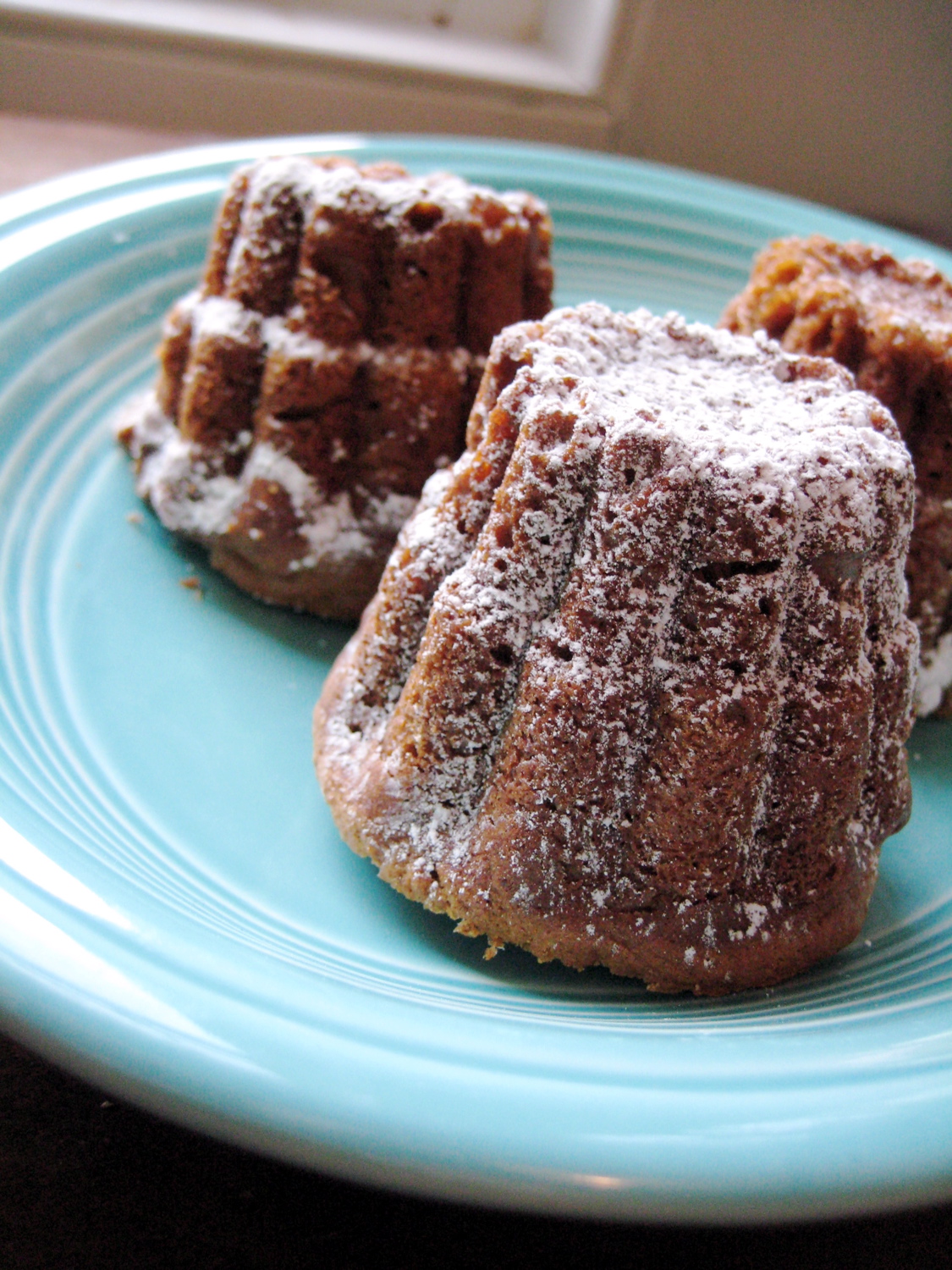 | ||||||||||||||||||||||
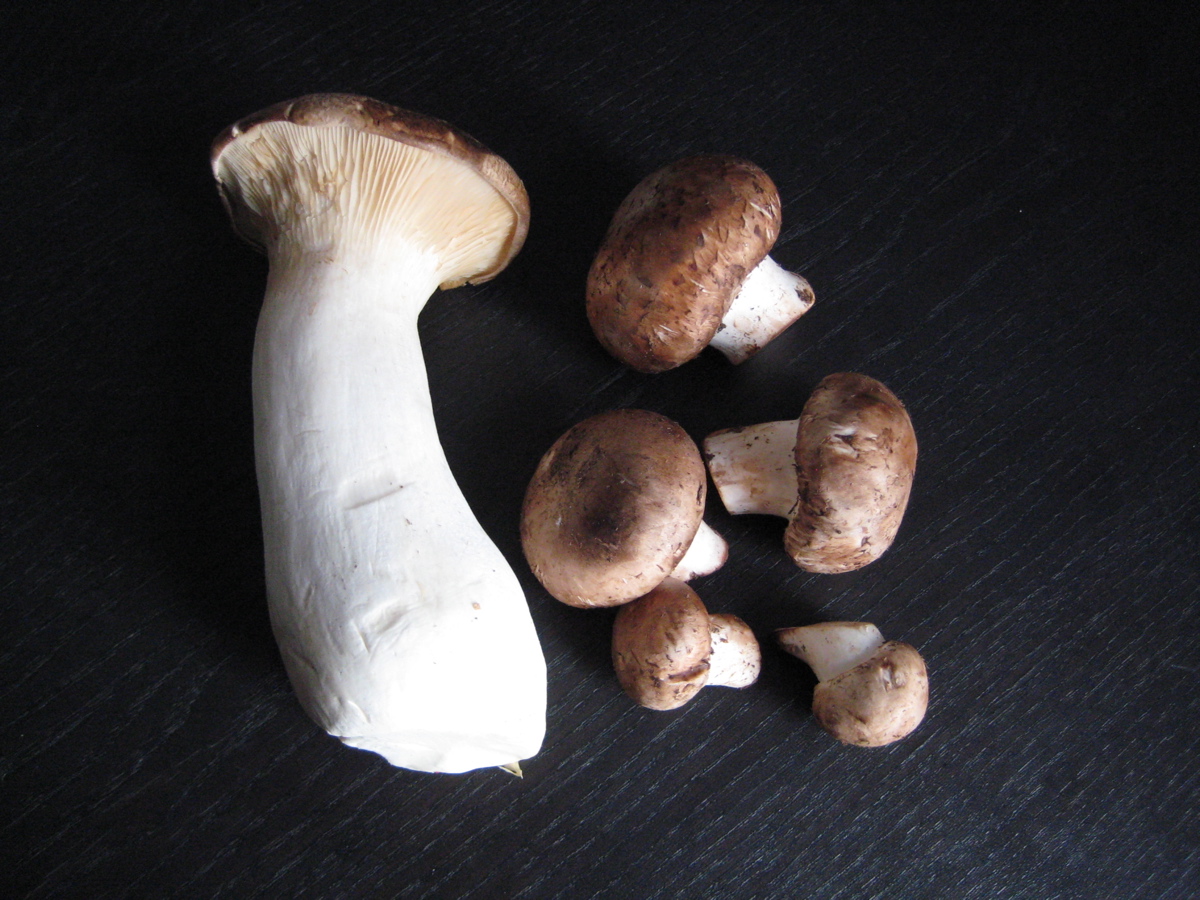 Beginning a few years ago, my husband and I have made almost every effort to cook and eat as seasonally and locally as possible. We are continually making changes to our lifestyle, but don't feel like we are really making any huge culinary sacrifices. Each season we do dig up more and more of our backyard to add to our vegetable and herb gardens (currently at about 2,200 sq feet). We blanch, freeze, can, dry and preserve as much as we physically have time for, both from our own plants and all the area farmers markets. All with hopes of having a little bit of those glorious, most prolific, summer produce months available to us in colder times. Beginning a few years ago, my husband and I have made almost every effort to cook and eat as seasonally and locally as possible. We are continually making changes to our lifestyle, but don't feel like we are really making any huge culinary sacrifices. Each season we do dig up more and more of our backyard to add to our vegetable and herb gardens (currently at about 2,200 sq feet). We blanch, freeze, can, dry and preserve as much as we physically have time for, both from our own plants and all the area farmers markets. All with hopes of having a little bit of those glorious, most prolific, summer produce months available to us in colder times.However, this time of year it gets tough. We are down to about five of the treasured quart jars of plum tomatoes we bought in flats from our farmer Seth Heller at the local market in August and canned over a weekend (all 45 of our heirloom tomato plants died in this year's blight, described here by Dan Barber http://www.nytimes.com/2009/08/09/opinion/09barber.html?scp=1&sq=tomato%20blight%20barber&st=cse). We've mostly used up our squash, garlic, shallots, and beets that were in cold storage, and are growing a little weary of produce, though frozen minutes from when picked, plucked from our freezer. Thankfully, there are farmers markets still operating this time of year! I visited the Union Square Greenmarket in NYC this past Friday (I split my time nearly 50/50 between the city and the very rural NY Catskills--more on this later). Though smaller than in warmer months, there is still a strong number of booths, offering a big variety of produce, meat, cheeses, and local foodstuffs to the urban locavore. I did some grocery shopping, and came home with a heavy bag of fresh food. Parsnips, carrots, celeriac, crimini and king oyster mushrooms, kale and Mutzu apples. Combined with the chickens and eggs we get from the local farm Quails-r-Us each week, February is not looking so much like a culinary wasteland in upstate New York. Recipes from this week's bounty to follow shortly, as well as every week hereafter.  [gallery] | ||||||||||||||||
|
|
{ welcome! }
 Catie Baumer Schwalb is a chef, food writer and photographer, who splits her life between the city and the country. Not too long ago Catie was a New York City based actress and playwright for more than a decade. She has her Master of Fine Arts from the National Theater Conservatory, and her Grand Diplôme in classic culinary arts from the French Culinary Institute in New York City.
... Read More ≫
Catie Baumer Schwalb is a chef, food writer and photographer, who splits her life between the city and the country. Not too long ago Catie was a New York City based actress and playwright for more than a decade. She has her Master of Fine Arts from the National Theater Conservatory, and her Grand Diplôme in classic culinary arts from the French Culinary Institute in New York City.
... Read More ≫{ get in touch }
{ what's new }
September 12, 2015
August 19, 2013
August 15, 2013
August 13, 2013
August 1, 2013
{ favorites }
{ archives }
Appetizers / Breads & Pastry / Breakfast / Cakes / Canning / Condiments / Dinner / DIY foods / Drinks / Fall / favorites / Grains / Holidays / Local / Noodles & Pasta / Pies & Tarts / Poultry / Salads / Seafood / Snacks / Soup / Spring / Summer / Sweets / Techniques / Vegetables / Vegetarian / Winter /
{ currently reading }
|



